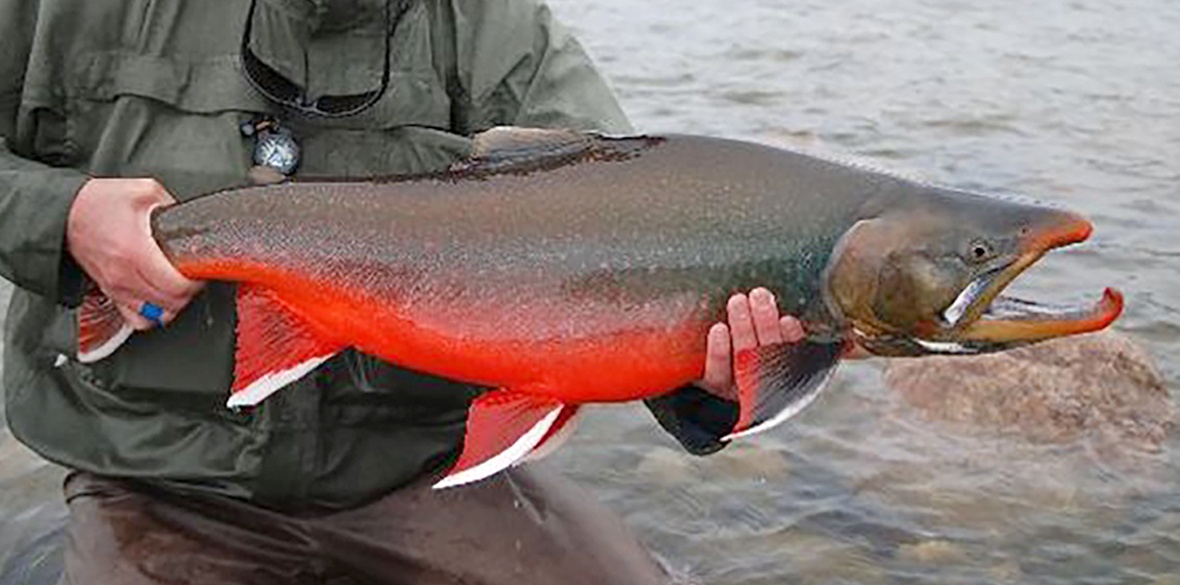This is the last article you can read this month
You can read more article this month
You can read more articles this month
Sorry your limit is up for this month
Reset on:
Please help support the Morning Star by subscribing here
LET’S start with some good news. I have written many times about the demise of our native white-clawed chalk stream crayfish (Austropotamobius pallipes). These had been forced out of their habitat by American Red Signal crayfish (Pacifastacus leniusculus). These invaders had escaped from commercial crayfish farms.
Worse, these unwelcome US critters also carried a fatal crayfish pox that killed our natives but to which they were immune.
Recent surveys and river counts however, have shown that populations of native white-claws are doing much better, whereas the numbers of non-native crayfish are falling fast.
Nobody really knows why this is happening — climate change perhaps? Whatever, we must not get complacent — but I’m raising a glass of crisp East Anglia sparkling wine to wish those white clawed miniature fresh water lobsters all the luck in the world.
★★★
Do you believe in the Loch Ness monster? Or any of the curious million-year-old beasts from prehistoric times surviving in the dark waters of various lakes all across the globe? Well, let me tell you, such mystery animals definitely do exist and I have seen them. And, whisper it quietly, I have even eaten one.
Let me name it. It is the Salvelinus alpinus, better known as the Arctic char. This is a rare cold-water fish in the family Salmonidae, native to alpine lakes and arctic and subarctic coastal water bodies.
Char is a fresh-water fish related to both the salmon and trout and tends to be somewhat between the two in size.
Commonly known as Arctic char because it is native to cold northern-European waters but, perhaps as an accident at the end of the Ice Age, it can also be found in the lakes of Switzerland and northern Italy, where they are rightly considered a great restaurant treat.
Char flesh can vary from light pink to red depending on season and feeding. Their flesh is pleasingly flaky and, although light in texture, it also has a little of the oiliness of salmon, making it a more satisfying choice than trout.
Char is still difficult to purchase in Britain, but now it is now being farmed by Iceland — the country, not the frozen-food supermarket — it is increasingly available through internet fishmongers.
The place to go to find this rare and ancient fish is Lake Windermere, the largest natural lake in both the Lake District and in England. Small boats with a couple of rods produce enough char for both local demand and to ship to more exclusive fishmongers.
This picturesque style of fishing is certainly sustainable. One of my favourite books, Swallows and Amazons by Arthur Ransome, is set on Windermere, and in it, his adventurous young heroes catch, cook and eat char. Try to join them if you ever get the chance.
★★★
Regular Ramblings readers will know how much I love the European eel (Anguilla anguilla). Some eels are still harvested for various delicacies such as stewed eels, smoked eel, eel pate, jellied eels — and the legendary eel pies.
Today, despite some good environmental work, they are becoming a more and more critically endangered species.
There have been amazing stories of their exotic life cycle. Some will live for up to 85 years. The mysterious Sargasso Sea has long been thought its main breeding ground, but that has never been conclusively proven.
Now, new research enables a better understanding of the life cycle of European eels and how to combat their decline.
Researchers from our Environment Agency have taken a major step forward in solving one of nature’s most enduring mysteries: where do European eels spawn and how do they get there?
Ground-breaking research published this year has confirmed as fact many of the myths and legends that had previously shrouded the complicated breeding cycle of the slippery critter.
This research, much using satellite tracking of tagged eels, was the first time we had been able to track eels definitely to the Sargasso Sea.
Now we have the first direct evidence of adult European eels reaching their spawning area. Their journey will reveal information about eel migration that has never been known before.
The journey of European eels to their breeding place is up to 10,000 km and considered one of the most impressive feats of animal migration anywhere.
Just where eels breed has long been a mystery, with the first recorded evidence of scientists looking into this phenomenon dating back six centuries.
A huge international effort including the Zoological Society of London, Environment Agency, Defra, Cefas, Natural England, University of Azores and Denmark University of Technology has produced the first ever direct evidence of European eels navigating the last 2,500km leg of their journey. Up until now, no eggs or eels had been found to confirm this spawning ground.
Back in December 2019, researchers fitted 26 large female European eels with satellite tags and released them from the Azores islands into the Atlantic Ocean. The Azores were chosen as the closest known point on the eel migration route that was tracked by previous projects.
The tags transmitted their data for six to 12 months, and data was received from 23 of the 26 eels’ satellite tags at various stages of the journey. Six tagged eels reached the Sargasso Sea.
The tags revealed the eels migrated consistently towards the Sargasso Sea and, remarkably, that this journey to their breeding grounds takes over a year.
Once eels spawn in the Sargasso Sea, their larvae return to British and European waters via a different route, carried on ocean currents on the North Atlantic Drift.
They then migrate into British and European rivers as tiny wriggling glass eels. I have written about the fisherfolk of the Somerset Levels catching these tiny eels, many of which end up in Japanese eel farms.
Unravelling this ancient puzzle is critical for understanding the reasons behind their decline and putting in place targeted conservation measures to protect this globally important species, whose populations are now at a historical low.
★★★
I spent a few weeks this summer exploring some of the ancient East Coast fishing ports, from Lowestoft in the south to north of the border.
Everywhere in museums and libraries I saw pictures of hundreds of steam drifters packing the various harbours as tight as sardines in a tin.
The fish they were after they called “the silver darlings” — we know it as the herring.
I also followed a parallel story of the teams of Scottish fisher-lassies who followed the fleet south. They gutted and packed the various kinds of herring.
There were kippers of course, bloaters and the amazingly named “red herring.” Red herring were really heavily smoked whole fish that would last for years in their sealed-up barrels.
They went all over the world to help feed the soldiers and civil servants who were busy painting the globe the red of the British Empire — yes, the history of our Empire always was a bit fishy.
There it was, one of Britain’s most important food industries — and then suddenly it was gone. Ports dead, ships on the scrapheap.
Why had the herring gone? The answer is simple. We overfished them.
There are lessons to be learned today.











